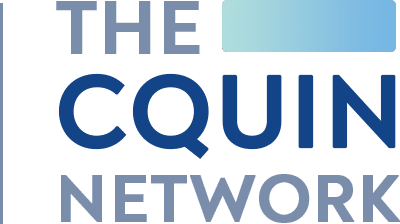DATE: June 26-29, 2018
The HIV Coverage, Quality, and Impact Network (CQUIN) held its workshop on the science and practice of differentiated service delivery (DSD) scale-up from June 26-29 in Ezulwini, Eswatini. Representatives from ministries of health in ten CQUIN countries gathered, along with implementing partners, donors, civil society, and U.S. Government agencies, to share best practices and lessons learned that would enable each country team to develop a road map towards achieving national coverage of DSD services.
The three day meeting was designed to foster intensive south-to-south consultation on national scale up strategies and to catalyze progress within each country towards scale-up. It focused on three key facilitators of DSD scale-up: engaging recipients of care and communities to increase demand for and support of DSD services, optimizing human resources to support DSD; and effective utilization of routine viral load test results for patient management.
The workshop included plenary presentations, panel discussions, and breakout- and report-back sessions. Plenary presentations and panel discussions focused on topics ranging from fostering engagement among people living with HIV and demand generation, to viral load utilization. Participants took a deeper dive in breakout sessions, where country country teams reviewed their existing DSD work plans, with an eye to accelerating scale-up and addressing key barriers and facilitators. County teams were paired and asked to provide feedback on each other’s scale-up plans.
The ICAP Approach to Differentiated Service Delivery
Wednesday (June 27) Presentations
Thursday (June 28) Presentations
Friday (June 29) Presentations
DAY 1
Session 1: Welcome and Framing Remarks
Framing Remarks
Dr. Miriam Rabkin, CQUIN Principal Investigator
Update on the CQUIN Network
Dr. Peter Preko, CQUIN Project Director
Session 3: DSD Scale-Up in 2018: Where Are We Now?
Taking Innovations to Scale – Lessons from MNCH
Dr. Neil Spicer, Assistant Professor in Global Health Policy, the London School of Hygiene & Tropical Medicine (LSHTM)
A Systems Thinking Approach to Scaling Up Adherence Clubs in Western Cape
Dr. Andrew McKenzie, Technical Lead for Governance, Policy and Planning, Health Partners International
World Bank Evaluation of DSD Scale-Up in South Africa
Lillian Diseko, Program Manager, HIV, AIDS and STI Cluster, NDOH South Africa
DAY 2
Session 6: Plenary Presentation – Fostering Engagement and Generating Demand
Supporting Community Observatories in West Africa
Ms. Solange Baptiste, Executive Director, International Treatment and Preparedness Coalition (ITPC)
Session 7: Panel Discussion – Greater Involvement of PLHIV in DSD Policy and Planning
Session 8: Panel Discussion – Demand Creation for DSD
Dr. Baker Bakashaba (The AIDS Support Organization [TASO] Uganda): TASO Experience
Amenan Agnes Kouassi (RIP+ Côte d’Ivoire): Civil Society Engagement in Côte d’Ivoire
Mr. Jeffrey Walimbwa (ISHTAR Kenya): Differentiated Services for MSM
DAY 3
Session 10: Plenary Presentation – Scaling Up Viral Load Services in Manzini
Altaye Kidane (ICAP Swaziland)
Session 11: Panel Discussion – Viral Load Utilization
Mr. Getachew Kassa (ICAP New York): Why Don’t We Use VL Results?
Dr. Lily Nyaga (NASCOP Kenya): A QI Collaborative to Improve VL Utilization in Western Kenya
Dr. Michael Odo (University Research Co. [URC] Malawi): Improving VL Utilization in Malawi
Session 13: HRH
Dr. Judy Khanyola (ICAP Kenya): Implications of DSD for the Nursing Workforce
Dr. Priscilla Lumano-Mulenga (MOH Zambia): Community HIV Providers and the Scale-Up of DSD Services
Dr. Josen Kiggundu (MOH Uganda): Modeling Health Workforce Needs in the Context of DSD
Additional Resources
Guide for Monitoring Scale-up of Health Practices and Interventions
Nine Steps for Developing a Scaling-Up Strategy
Scaling Up—From Vision to Large-scale Change: A Management Framework for Practitioners
Past Meeting Summaries
DSD for Adults at High Risk of HIV Disease Progression
DSD for Adolescents Living with HIV
Also available with French and Portuguese Introduction and Executive Summary
Resources





